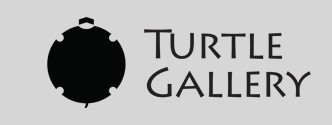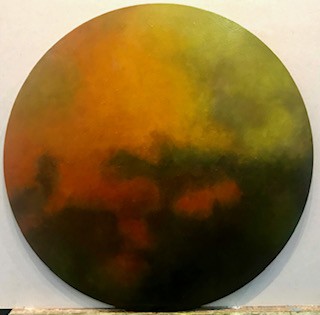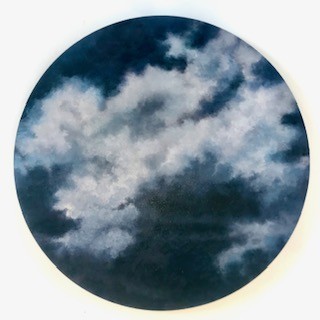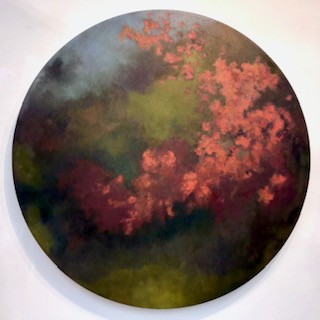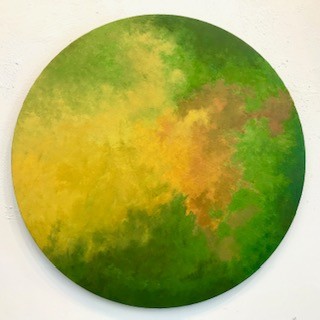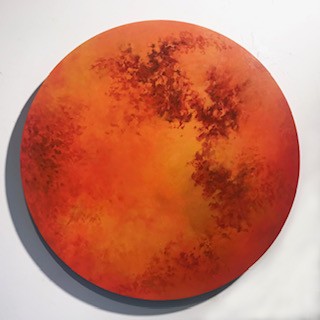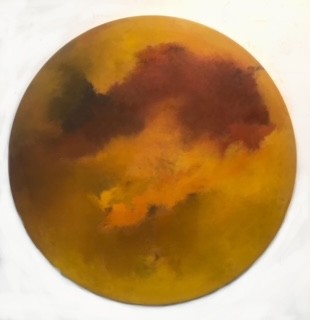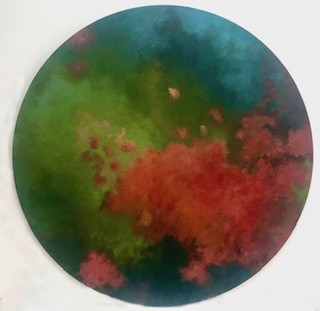Janis Goodman
Janis Goodman was born in New York City. She is a Professor of Fine Arts at the Corcoran College of Art at George Washington University. She has maintained a studio in Mt. Rainier, Maryland for 25 years. She was the first artist to find Artists by the Tracks along with Tom Ashcraft. Her large-scale paintings and drawings move between the narrative and the deconstructed. Formally, the work is a conversation around gesture, color and the symbolic nature of visual language. Her work explores issues of the changing environment, natural phenomenon and concerns facing the natural world.
Her work has been shown nationally in New York, Los Angeles, Atlanta, Dallas, Maine and Washington, DC. Internationally she has exhibited in Greece, Peru, Russia, Korea, Germany, Italy, England and The Netherlands. In addition to her private studio practice she is a member of Workingman Collective, a group of artists doing site specific and community related projects.
Janis has been the arts reviewer for WETA’s TV program Around Town since 2001. She co-curated the traveling photography exhibition Is Seeing Believing? The Real, The Surreal, The Unreal in Contemporary Photography. Her writings on art have been published in Sculpture Magazine and numerous artist’s monographs. She has lectured at the National Gallery of Art, The Smithsonian and has been a visiting artist and lecturer at colleges and artist residencies in the United States and abroad.
Janis has received numerous DC Commission on the Arts Grants to Individual Artists, The Bader Prize and is a recipient of a National Endowment support grant. Janis has an MFA from George Washington University with additional studies at the Corcoran, UCLA, Pratt Graphics and in Italy. She is sited in Who’s Who in American Art and other publications.
Janis Goodman’s work moves between the narrative and the deconstructed. It is based on the laws of nature but governed by intuition and experience. Years of hiking national parks and kayaking rivers along the mid -Atlantic and New England have formed the backdrop of her work. Her fascination with natural disasters additionally fuels the sense of the absurd and the possibility of chance. These disasters additionally awakened her awareness and concerns of water and the environment.
Ms. Goodman’s large-scale oil paintings follow the invisible energy paths connecting the dots between the observed, imagined and remembered. The paintings don’t specifically pay witness to an event but set up a strategy of cause and effect. They slow down the motion that is invisible to the eye and give the observer visual signs of a time or a direction. There are sufficient clues in the work to give the impression of an attempt to shadow nature; this quickly dissipates, as one is made aware of the transience of the subject. The transcription of the natural and changing structures are meant to impart both a spirited wonderment of the occurrence as well as a curiosity about the phenomenon. In recent paintings Janis has occasionally included recognizable natural forms such as crickets, bees, flowers and skies. These images move the needle from being symbols to realities (at least painted reality). They are a link between the literal implied and the suggested. They are depictions of the world we see out of the corner of our eyes. Not unlike the shorthand of calligraphic painterly marks they are the shorthand of color in the natural world.
A recent trip and visit to the Hawaiian Islands generated a new and ongoing body of work. The interest in going to Hawaii was sparked by a curiosity of the lava fields. The notion of new land masses being formed due to destruction and violent forces when so much of our planet is being consumed by raising water levels fascinated me. This seemed like a paradox. Layered upon the new land mass is vegetation that is slowly being introduced through birds, plantings and wind currents. The visit to the islands revealed a new palette and subsequently a change in brush work and mark. The paintings have become less graphic, denser in pigment, more about color interaction and environment color.
Janis has been working with other faculty from the George Washington University Elliott School of International Affairs on possible projects regarding water and sustainability and environmental impact on culture. The paintings as mentioned in the first paragraph are an implied address to the issues of the environment, changes occurring naturally and those imposed on the planet. The paintings continue to rely more heavily on perception than fact. The personal is suggested by the brushwork, palette and often the title. When viewed together each painting reveals a new boundary and impulse that is part of a continuum of my specific language.
